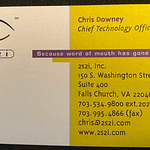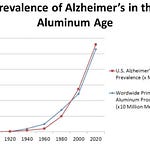I was not the only one who warned him. Alcoholics are notorious deniers and have decades to save themselves before their liver goes. At some point, they have nothing left to do but die.
Jim signed up for hospice, and they killed him within five hours using intravenous sedatives.* Hospices are paid a fixed fee for care that can last between a few hours and a month.** For my friend, all they had to do was make his bed, start an IV, put his body on a gurney, and wheel it to the morgue. It is a profitable business model if you have a taste for it, and Jim knew the score because he was once a nursing home administrator.
*This is a common enough practice with COVID patients, but he did not have that.
**This is close, but not exactly how it works.
The following might be TMI (Too Much Information). In California, physician-administered intravenous drugs for suicide were frowned upon until recently. Terminal patients had to somehow swallow 100 secobarbital capsules (or their contents mixed with syrup) through dry mouths and then struggle to avoid barfing. Although this medication was invented in the 1930s, Valeant Pharmaceuticals recently managed to re-patent it. They charge $3000-$7000 for a fatal dose that should cost only a few dollars.
As I reflected on my friend, I realized that our relationship was the story of my life. Even when I was prancing around my office in a white coat seeing patients, they were nearly all already sure what they needed. Thousands of people passed by me, and they mostly ignored whatever I said.
I do not advocate blindly following anyone's words or knowledge. Everyone must come to their hard personal truths. But if you listen only to your biases, you are playing Russian Roulette with your health—and everything else. Although a lot of what physicians believe is wrong, and cynicism about them is justified, ignore them entirely at your peril. Changing your mind is painful, but dying is worse.
I am not a sage, a guru, or an original thinker. All my insights are derivative of others' work and hard-won after years of dogged study. Any art I bring is simple synthesis, and I share everything I learn in real time. This endears me to some but is hard on those closest to me. I am an acquired taste for most.
And so I am a Cassandra. My failures include the following:
I was willing to torch my relationship with my kids to warn them about the COVID vax, but I had little influence. My wife knew the score but refused to tell them anything. They took the jab several times each and are finally smelling the rat. My prayer is that they all received placebos or near-placebos. The chances of this were 199/200 each time they spun the wheel, but by the end, they would have been safer if they each had open heart surgery. It is on me if they are infertile or die young of cancer, heart disease, or neurological problems.
Three of my close friends dropped dead within a week after getting the vax. They thought my warnings were political and paid the price.
I have known one dear friend for fifty years. He did an athletic feat so difficult that his friends put it on YouTube. That night, he had a massive stroke that forever destroyed his speaking ability. He had recently been "vaccinated," and clotting is the hallmark of jab injury. By now, everyone with eyes and a brain who watches TV sports knows that cardiovascular stresses increase these risks. Like nearly everyone else, my friend DFL to me.
Another friend was diagnosed with systemic cancer that may yet kill her. She refused to supplement vitamin D until I insisted her doctor test her level. It was near zero. We have dozens of studies, including one with 26,000 patients, that prove higher D levels decrease the chances of cancer, heart disease, and other harms. Mercola asserts that people with D levels over 60 never get cancer. Search the subject yourself, starting HERE and HERE. Recently, my friend had another D level of 130 ng/ml, and her primary doctor commanded her to stop taking it. Optimal is supposedly 60-100, but her's is identical to unsupplemented Florida lifeguards. My friend is now paying attention to this box-checking idiot but DFL to me.
When I was in practice, I advised a women in her mid-20s to use Skyla synthetic progesterone (progestin) impregnated IUDs for birth control. I learned later that all progestin products, particularly birth control pills, even the tiny doses from IUDs, significantly increase women's chance of getting breast cancer.
The package insert for Skyla says the hormone is gone after three years and recommends replacing the device. I told this girl that the safest course would be to take it out and get a copper-7 IUD such as Paragard. Although this was first used fifty years ago, a Pharma company somehow re-patented it and now charges us $1200 (it is far cheaper in other countries). Alternatively, this woman might leave the Skyla in place as a passive birth control method after three years have passed. Copper ones are recommended for up to twelve years, and I suspect the expired Skyla would also continue to work for a prolonged period. I hope she is listening, but I doubt it.
When I was prescribing hormones, most women ignored me, saying they "heard somewhere" that these caused cancer. This is wrong except for 1) synthetic progesterone and 2) if estrogen is given without progesterone for those with a uterus. When I told patients that hormones decreased Alzheimer's disease, improved intellectual performance, and reduced hip fracture risk, it did not convince them. Only when I told them testosterone was the best weight loss drug we have ever had did they occasionally start to listen. Download Hormone Secrets HERE to learn more.
John is among the savviest and most skeptical people I have ever met. He is having his fourth bout of COVID and feels terrible. I fear his three jabs damaged his immunity. I would hate to lose him, and since he is 76, he is vulnerable. I will recommend that he see Dr. Pierre Kory (DrPierreKory.com), who would likely prescribe daily ivermectin long-term. John DFL about the damn vax, and he probably will not listen now, either, but I have to try.
What about you, dear reader? Before you deleted THIS post, did you buy a gun, or did you not freaking listen? Think about the UK, Australia, and Canada all tightening their gun laws. In World War II, Jews in the Warsaw Ghetto were rounded up and shipped to their deaths because they had no firearms. The US is the only place in the world where gun rights are still intact.
I recently wrote that replacing legacy media using our email lists is the only way to survive, and I published how to do it HERE. This had only 26 comments and was not reposted. One good friend—who is otherwise a flexible thinker—told me he needed absolutely no writing advice, thank you. These skills, not your content or research, get you read. I wrote about the objective standards for good writing HERE.
As far as I could tell, my other readers DFL either. Did you put your contacts into a Substack account, and are you composing an introduction for them? Have you joined the revolution, or are you keeping your head down and pretending you are invisible?
My final example is offensive to many. When I was twenty, thirty, or even forty, I had no idea that certain people in their sixties could effortlessly see through everything I did and often even predict what I would say before I said it. This magic is possible because some of us have life experiences that are double or triple those of younger people. I say "some of us" because our group, like yours, is packed with cretins who have lived the same Groundhog Day over and over their whole lives.
So if you have a much older friend who offers advice, listen carefully. He may have solutions to your problems at his fingertips. But it is your life, and we must each chart our course and make our own painful decisions.
Thanks to Chris Bray for the DFR (don't freaking read) acronym. I copied your idea.
As always, my disclaimer is that I am retired; this is not medical advice, only informational commentary. I cannot act as your doctor.
The rest of this post is a chapter from Butchered by "Healthcare" about ways we can influence others using big Pharma's strategies. Tony Robbins has similar ideas HERE.
INDUSTRY SEDUCES DOCTORS
Physicians, medical schools, and professional organizations have no… excuse, since their only fiduciary responsibility is to patients. [Their] mission… is not to enter into lucrative commercial alliances with the pharmaceutical industry. As reprehensible as many industry practices are, I believe the behavior of much of the medical profession is even more culpable.
—Marcia Angell, former editor-in-chief, New England Journal of Medicine (NEJM).
How could physicians have allowed this to happen? No doctor I know started with the idea of money above patients. We all wrote that essay in school about how we wanted to save the world. But we are now pawns of moneyed interests, and we often betray our patients’ trust.
Physician training is brutal, and our expectations are high. Most of us have little income through our mid-30s, and we often take out huge loans. We may be responsible for spouses and children. Everyone around us seems to be squeezing a fortune out of healthcare: older surgeons, radiologists, hospital administrators, and even the lawyers suing us. We want to claw our way up the pay scale.
The best marketers on the planet are spending billions of dollars trying to get us to channel whatever resources we control towards their companies. We know this, yet we still connect with our patients, inspire their trust, and try to do our best. They are dependent on us, especially the sick ones, and this makes us responsible for all consequences.
I am by turns reverential and contemptuous of my peers. Some are true mensches. This Yiddish word means they are honorable, modest, and outstanding mentors. These real physicians are with us still, and you will hear their angry and sorrowful voices here. Others sacrifice their patients’ health to make more money.
Most of us are somewhere in between. We are trying to make a living in a system where the industry has rendered the science murky. Most of our misdeeds are not intentional, and few of us admit to ourselves that we ever take advantage of patients. We are blind to our faults, but to the patient on the receiving end, it is a moot point.
Doctors imagine their scientific training and professionalism allow them to walk through this jungle without bias. But we are profoundly vulnerable, the more so because we believe little can sway us. Nothing excuses us for ignoring patients’ best interests—not fatigue, confusion, ignorance, or even cowardice.
Salespeople begin our seduction in medical school, where they supply free food. Gangs of them later invade our offices. The corporations teach them the “three Fs of sales:” food, flattery, and friendship. Relationships are everything; the sales reps occasionally even use the fourth F. The target rarely understands what is going on, and the profits from blowing up prescribing are enormously larger than corporate marketing expenses.
Gifting has a considerable effect. Accepting a single pharmaceutical industry-sponsored meal produced higher rates of prescribing. The more expensive meals had bigger effects. Doctors who accept money prescribe brand-name medications twice as often. Recipients of industry funds write more costly prescriptions. A JAMA review (2000) entitled “Is A Gift Ever Just a Gift?” looked at 538 studies about lectures and gratuities sponsored by drug companies. Gifts transformed physician behavior. How could they not?
An analysis at Worstpills.org, published by the Ralph Nader group Public Citizen, concluded that this situation produces staggering overprescribing. In 2018, US patients filled 4.19 billion prescriptions, over 13 per person. Since many of us take no medications, the rest are consuming a freakish quantity.
How can presents have such a profound effect on professionals? The answer lies in “influence theory,” a foundational field of psychology that corporate marketers have weaponized to boost sales. Any time we give a gift or favor, substantial leverage occurs. This is “reciprocity.” It seems obvious, but we are easily fooled.
People who help you have the favor returned. Turning down gifts is antisocial, and we think of those who do not give back as “moochers.” Larger presents make a bigger difference, but small ones can be powerful as well.
Reciprocity is likely a fundamental evolutionary survival trait. Giving and receiving meals with strangers locks in relationships. In the past, this allowed a tribe or person to support others during hard times when starvation loomed. Food, from sandwiches for office staff to lavish dinners for doctors, is one of the most potent weapons in the corporate drive to increase drug and device sales.
Outside medicine, business people recognize reciprocity. They scramble to gain an advantage by delivering favors, even as small a consideration as holding a door. The impulse to return gifts is reflexive and powerful. This is unlike negotiated exchanges.
Restaurants that give free samples of food can make purchases seem irresistible. Drug companies provide samples of expensive drugs to doctors who then gift them to patients. The process bonds everyone to eventual purchase—which is often painless because insurance pays.
At one time, Hare Krishna’s followers were handing out flowers at many US airports. This worthless gift often triggered an automatic contribution. The beggars would pocket the money, and the travelers would throw the flowers away. The Krishnas would then pick them out of the wastebaskets and reuse them. Another example: restaurant tips significantly increase when the waiter leaves candy with the check.
After reading about influence studies, I understood why drug companies give away all that plastic junk. Besides reminding us of brand names, free pens and coffee cups start reciprocal relationships. Later, dinners, trips, and even substantial research grants may be available. A few prescriptions of stratospherically priced drugs will pay for nearly anything. Congress recognized how potent this is and banned large presents for physicians—yet loopholes still abound.
Industry representatives overwhelm busy doctors with these influence techniques. Reciprocity or returning favors is only one type. Others include:
✪ Authority (if the physician leaders do it, it must be right)
✪ Liking and identification (what a nice drug rep, he plays golf just like me)
✪ Social proof (my competitors are doing it)
✪ Scarcity (the product is nearly gone, buy or prescribe it now)
The best reference for this process is Dr. Robert Cialdini’s Influence (1984). This book has been regarded as a bible of sales by generations of business people.
We idolize celebrities, giving them credit for almost anything, even sound judgment. The companies flood TV, movies, and the Internet with their endorsements. These combine authority, liking, and social proof. For example, Bob Dole helped create a new category of disease, erectile dysfunction. In 2002 Kathleen Turner discussed rheumatoid arthritis on Good Morning America and directed listeners to a website. She did not disclose that she was working for Wyeth, the manufacturer of the rheumatoid drug Enbrel. Cases like this have been in the news for over a decade.
Ninety-four percent of US physicians accept drug and medical device companies’ gifts. Most of us only receive a few dollars a year for an occasional sponsored lunch at medical meetings. But twelve percent of US physicians get paid for research—or sham research—and the money is substantial. According to ProPublica, the total industry gifts to physicians were over $2 billion a year in 2018, including gifts, meals, speaking, travel, and consulting. They did not count research grants, but openpaymentsdata.cms.gov did. This website said the total was $9.35 billion for 2018 alone. You can look up how much each doctor received on either website.
There is now one pharmaceutical sales representative for every five doctors in the US. They call the big prescribers who like and use their drugs “whales.” Companies often pay them to lecture about products at meetings. Hawking physician credibility like this has built many a summer home.
Jerome Kassirer, former editor of the NEJM, described all the payoffs in On the Take (2004). Some consultant physicians get free trips to Florida, some get $1000 for attending one-day meetings, and some get paid for allowing their names on ghostwritten articles.
Psychiatrists receive more money from corporations than any other US specialty. Many hide the payments. Lisa Cosgrove studied the highly influential psychiatric diagnostic “bible,” the Diagnostic and Statistical Manual of Mental Disorders (DSM IV and V). She reported that three-quarters of the authors had financial ties to corporations.
Pharmaceutical companies know which of us is prescribing each medication. Here is how they find out. Although pharmacies will usually refuse to sell the names of doctors who prescribe, they will sell their Drug Enforcement Agency (DEA) numbers. The American Medical Association (AMA) then sells the doctor’s name that matches each number back to the corporations. The companies find out precisely how much medication each physician prescribes. This allows them to pressure doctors to sell more and target those who are small prescribers or who do not use their products at all. Including this, the AMA made more than $56 million from database sales in 2018.
I know a family physician who gets a free dinner nearly every week. He recently had his housewarming party catered by a drug company. Specialists usually control more sales, and they often get the most. Everyone thinks this is harmless, but it is not.
Other industries criminalize this kind of behavior. For example, the Securities and Exchange Commission has clear rules about disclosure when raising money for investments. An investor needs to know conflicts that could effect returns, just as a patient should know if a corporation has paid the doctor to prescribe. Law, business, and governmental groups forbid outside relationships that produce financial gain, professional advancement, or family advantage. Ethical conflicts like these may provoke a lawsuit or criminal prosecution.
Lawyers can be disbarred for concealing conflicts of interest (COIs). Judges recuse themselves or are recused by their supervisors from involvement where they have personal or monetary relationships. Federal judicial and executive branch bureaucrats must sell their ownership in companies of industries that they might affect. The federal government prohibits its employees from accepting anything with a value of over $20. Reporters “may not take any payment, gift, service, or benefit… offered by a news source…[in order to] maintain accuracy, balance, and the truth.”
Physicians’ organizations are also being bought. The medical industry gives them trinkets, research grants, outright grants (sometimes in the millions), speaker's fees, and substantial exhibitor fees for their meetings. Free ghostwriting is part of it. All this ensures favorable guidelines, prescribing, and publications. One reviewer called the conferences “unprofessional conduct” and wrote that the impact of the system was overwhelming.
Nearly all the societies’ websites state that they are “funded by an unrestricted grant from company X.” Each physician group has policy statements saying they have no commercial bias, however. Their physician leaders vehemently proclaim objectivity with editorials in the journals.
For example, the Endocrine Society says in its Code of Ethics: “The Society actively seeks outside financial or in-kind support… from pharmaceutical, device, or biotech companies… [and they] maintain complete independence between industry support of any and all of its programs… [and] objectivity and credibility are not compromised in any way.” However, for their “Endo2015” national meeting, they advertised the industry perks, from “therapy dogs” to raffles, to prizes, to local jazz artists. Posters on their website proudly stated (caps in the original):
WITH MORE THAN 5800 ATTENDEES, ENDO DELIVERED ON IT’S PROMISE TO PUT YOUR COMPANY AND BRAND IN FRONT OF THE LEADERS IN ENDOCRINE PRACTICE
They have over a dozen corporate sponsors. Implausibly, their “Statement on Industry Relationships,” reminds us: “Sources of commercial support do not influence the scientific, educational or public policy decisions of the Society.”
Companies now spend at least twenty percent of their vast marketing budgets on the physicians who have the most influence. They call them the “key opinion leaders,” using the acronym KOL. Since routine gifts to physicians have been progressively restricted by federal law, the companies focus on things like study funding, which has few rules. This research money is used to induce top doctors to corrupt science, produce favorable conclusions, and advocate for products.
Many of these physicians conceal the sources of their money. For example, the dean of Yale’s medical school, the director of a cancer center in Texas, and the incoming president of the most prominent society of cancer doctors all published articles in medical journals without disclosing financial ties to pharmaceutical and healthcare companies (New York Times, 2018). José Baselga, MD, chief medical officer at Sloan Kettering Cancer Center, took millions from industry, published frequently, but mostly kept the payments secret. When this came out, he resigned (NYT/ProPublica, 2018).
Industry pays the KOLs to write favorable guidelines for physician practice. Hundreds of these statements now command doctors to perform in ways that jack up drug sales. Four of five authors of these “standards” have financial relationships with the corporations, with an average of ten conflicts of interest (COIs) per contributor. One study looked at 431 guidelines. Eighty-eight percent had no disclaimers and did not even reference the relevant literature. A JAMA review of 279 guidelines produced by 69 authors concluded their methodological quality was atrocious. Unfortunately, these “standards of care” have the weight of expert testimony in court.
Gilbert Welch told how the corporations made it happen in Overdiagnosed, Making People Sick in the Pursuit of Health (2011):
The head of the diabetes cutoff panel [which established standards] was a paid consultant to Aventis Pharmaceuticals, Bristol-Myers Squibb, Eli Lilly, GlaxoSmithKline, Novartis, Merck, and Pfizer—all of which made diabetes drugs. Nine of the eleven authors of recent high blood pressure guidelines had some kind of financial ties… [to the medication manufacturers]. Similarly, eight of the nine experts who lowered the cholesterol cutoff were paid consultants of the drug companies making cholesterol drugs. And the first osteoporosis standard was established by… a panel… whose corporate advisory board consisted of thirty-one drug and medical equipment companies.
The industry has even infiltrated medical schools, home to some of the most influential physicians. Eric G. Campbell, Ph.D., studied 459 department chairs of US medical schools. Two-thirds of them and two-thirds of their departments had close ties to industry. An overwhelming majority of these chief doctors believed they had no biases related to this.
In another study, he discovered that a third of the Institutional Review Board members who approve studies had corporate COIs. Thirty-five percent of them had conflicts regarding issues they voted on during the past year. Federal guidelines require recusal in these situations, but they are ignored.
Disclosure is used to launder conflicts of interest, but this gets nothing clean. Elsevier, the largest medical publication house, requires its authors to confess their payments in writing. But this does not disinfect payoffs. No matter how strong an argument, if it comes from a paid advocate, a balanced view is impossible. Sponsors punish actions contrary to their interests by cutting off their consultants’ money.
Joseph Biederman, MD, has one disclosure statement of 364 words, an article in itself. He was censured for failing to disclose some of his many sources of corporate pay, and the NY Times asked whether he was an “expert or shill.” He is Chief of Clinical and Research Programs in Pediatric Psychopharmacology and Adult ADHD at the prestigious Massachusetts General Hospital. Here is another disclosure statement:
Dr. Gertz reports personal fees from Ionis/Akcea, personal fees from Alnylam, personal fees from Prothena, personal fees from Celgene, personal fees from Janssen, grants and personal fees from Spectrum, personal fees from Annexon, personal fees from Appellis, personal fees from Amgen, personal fees from Medscape, personal fees from Physicians Education Resource, personal fees for the Data Safety Monitoring board from Abbvie, personal fees from Research to Practice, speaker fees from Teva, speaker fees from Johnson and Johnson, speaker fees from Medscape, speaker fees from DAVA oncology, roles on the Advisory Board for Pharmacyclics and Advisory Board for Proclara outside the submitted work, royalties from Springer Publishing, and Grant Funding from Amyloidosis Foundation and International Waldenstrom Foundation; NCI SPORE
Everyone respects doctors, particularly those with fancy degrees and university affiliations. Credibility based on credentials seems dependable. Unfortunately, influence works on them the same as on the rank-and-file. After money changes hands, the recipient’s recommendations about drugs, treatments, and surgery are biased. Pretensions of objectivity citing authority are much worse than nothing because they fool us. Patients and doctors alike are blind to this.
Neither physicians nor patients are tough-minded enough to believe that powerful effects—essentially bribery—now command nearly every move in healthcare. In theory, doctors and other caregivers put patients before finances, but corporations are designed as money-making machines. For them, patient outcomes are a distant consideration.












Share this post